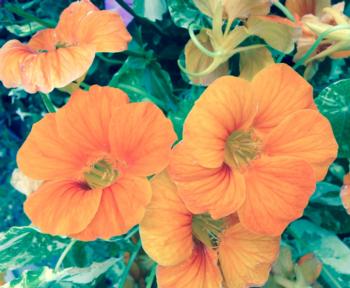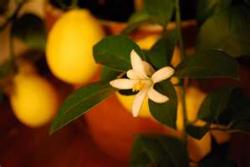Unused stories
Growing In Your Garden Now - Edible Flowers

If you're looking for something new to grow -- and to serve for dinner - perhaps you should consider edible flowers. There are many flowers that are not only colorful additions to your garden, but they also make intriguing ingredients to creative meals. Of course, you may already be growing the more familiar edible flowers such as those found on amaranth, squash, and pumpkin. And many herb and weed blooms are edible as well, including dill, chives, wild radish, and dandelion. But what about flowers whose associated fruit and foliage do not usually end up on your dinner plate?
In her definitive vegetable gardening book, Golden Gate Gardening, Pam Peirce devotes a few pages to edible flowers. She reminds readers that growing your own edible flowers is easy, inexpensive, attractive, and doesn't take up much space. Peirce highlights a few edible flowers, such as:
- Borage (Borago officinalis) can be harvested all year and tastes like cucumber.
- Johnny-jump-ups (Viola tricolor) have a mild winter-green flavor.
- Nasturtiums (Tropaeolum majus) are spicy and decorative in salads or as appetizers.
- Carnations (Dianthus carophyllus) are sweet. Eat petals only.
- Citrus blossoms have a tangy taste and are useful in fruit salads, desserts, and sauces.
- Scented geraniums (Pelargonium graveolens) can be used as cake liners to scent a cake.
- Rose petals can be added to meat dishes as well as fruit salads and desserts.

By Marie Narlock
